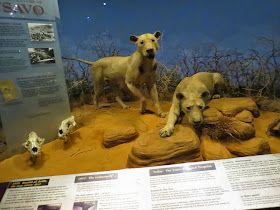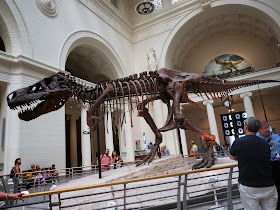Friday, August 29th
Chicago - Montrose Point Bird Sanctuary
We made our only trip into the city as I had promised my daughter a visit to the Chicago Field Museum for the mummies and fossils. But first we had to make a birding stop in Lincoln Park at the
Montrose Point Bird Sanctuary and the 'Magic Hedge' located right on Lake Michigan. The birding here can be very special, especially in migration.

We arrived about 8:30 am an hit on a Lifer with sighting a Yellow-bellied Flycatcher. I was keen to visit here as there were opportunities to find birds that do not pass through Florida very often, such as the yellow-bellied flycatcher, as well as a Philadelphia Vireo and a Nashville Warbler we found here. American Goldfinches, House Finches and House Sparrows were no doubt the most common birds on the day followed by the many Chimney Swifts swooping overhead. Other species found today included a female Baltimore Oriole, several Black-capped Chickadees and Cedar Waxwings. Down by the beach we did not see any special shorebirds, such as baird's sandpiper or hudsonian godwit, but did see Sanderlings, Killdeer, and Semipalmated Plovers. The grassy area were ablaze in color with all of the blooming wild flowers. Wish we had more time to discover more interesting birds but it was time to head to the museum.
 |
| Ruby-throated Hummingbird |
 |
| Chicago Skyline |
The grassy area were ablaze in color with all of the blooming wild flowers. Wish we had more time to discover more interesting birds but it was time to head to the museum.
 |
| Lots of butterflies |
 |
| Magic Hedge |
Chicago Field Museum
The Field Museum was just a short drive from Montrose Harbor and we were here for the fossils and Mummies.
In the Egyptian Hall we were lucky to catch-up with a gentleman leading an extremely interesting guided tour about ancient Egypt. He, for example, was explaining the meaning of symbols on a 3000 year old copy of The Book of The Dead. Which he explained was not really a religious document, but a guide book on how to enter the afterlife.


















No comments:
Post a Comment